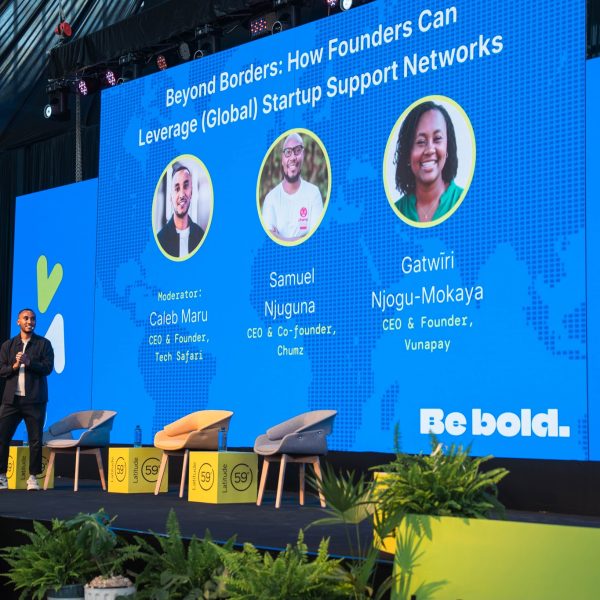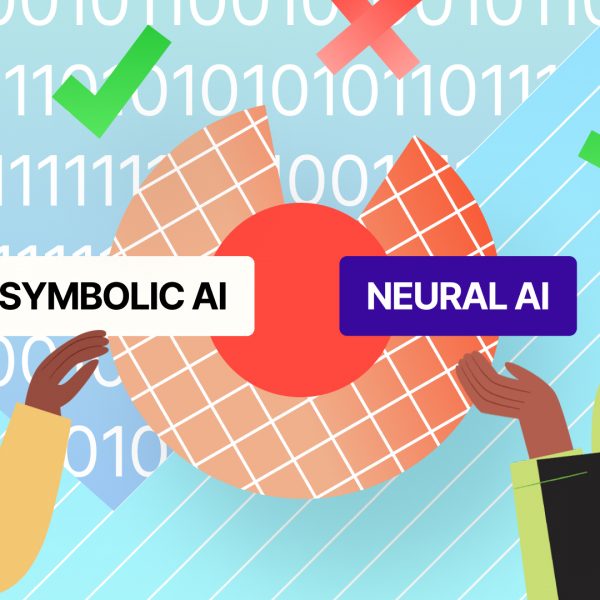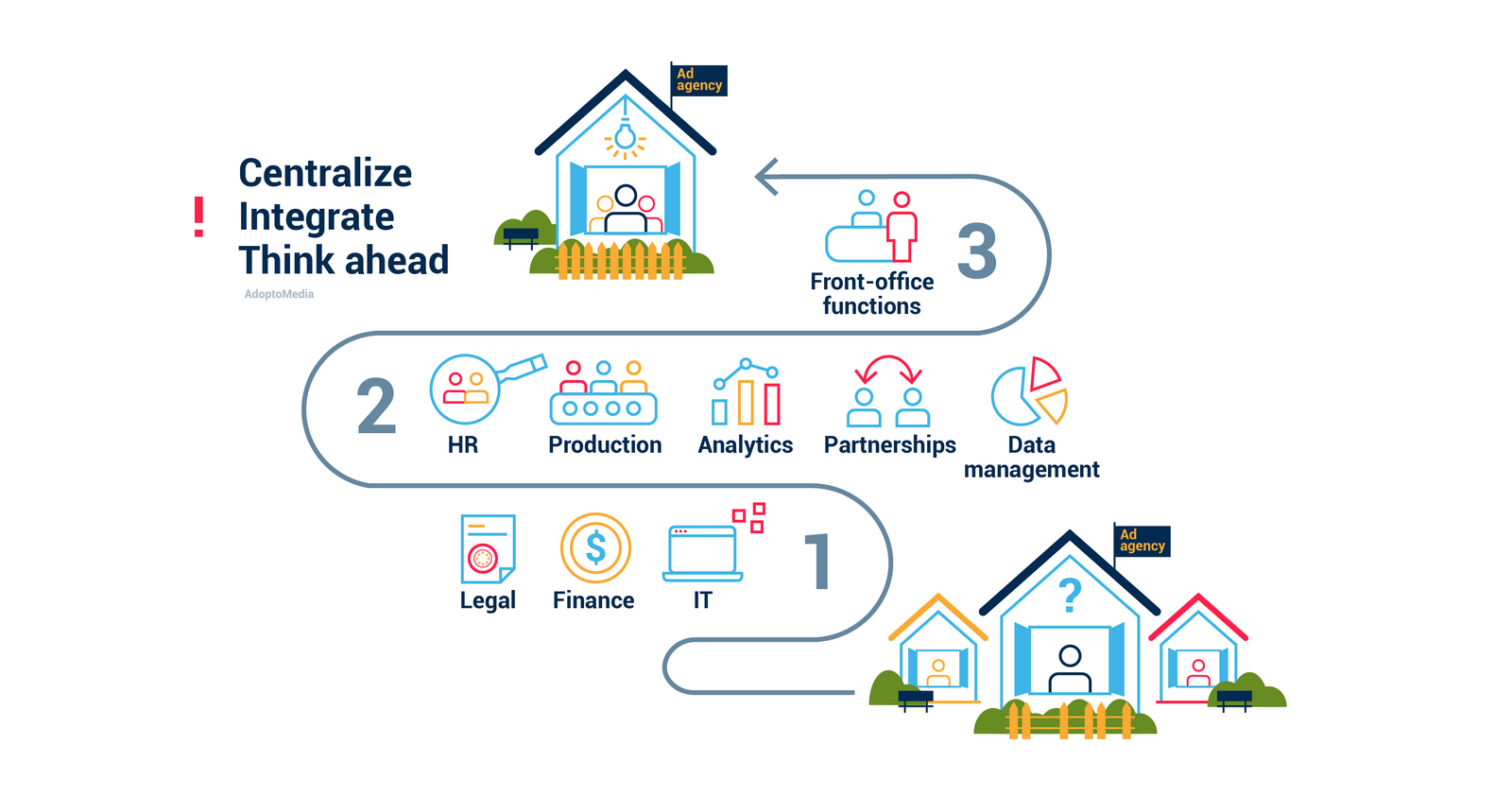 According to a global consulting firm PwC, most marketing agencies all over the world are using a no longer effective business model and should start making significant changes to catch up with their clients’ needs. They should take a much more integrated approach to all their operations. This article is an overview of the current situation in the industry and four models that can be implemented to create a next-generation marketing agency. Each strategy carries certain risks and requires overcoming some obstacles, but the advantages far outweigh the disadvantages and provide new opportunities.
According to a global consulting firm PwC, most marketing agencies all over the world are using a no longer effective business model and should start making significant changes to catch up with their clients’ needs. They should take a much more integrated approach to all their operations. This article is an overview of the current situation in the industry and four models that can be implemented to create a next-generation marketing agency. Each strategy carries certain risks and requires overcoming some obstacles, but the advantages far outweigh the disadvantages and provide new opportunities.
Over the last decades, most large agencies have taken over numerous smaller ones in spheres like digital, media planning and buying, branding, and creative services. Despite being financially accountable to their holding company, these subsidiaries act independently and even compete with each other. There is nothing wrong with competition; it helps drive progress and generate the best ideas. However, today marketing agencies have enough external rivals to contend with, such as platforms like Facebook and Adobe, or in-house agencies established by some companies. For instance, Procter & Gambe created its own marketing department and managed to save $750 million on advertising and production costs in 2018. Bringing some capabilities in-house is not just some temporary trend; it’s a new reality for the industry. At the same time clients are looking for unified teams including top experts from all necessary areas that could replace numerous agencies and save budget.
In the table below, you can see what challenges agencies face on two fronts in terms of today’s market conditions and client’s demands.
 As you can see, agencies find themselves between two fires with a changing marketing landscape, emerging platforms and technologies and search for experts to cope with them. To benefit from innovations like big data or virtual reality they require massive investments that a standalone agency simply cannot get, so integration is the key to development. Another issue is clients, who scrutinize every dollar spent, constantly change their demands, and complain that the system where they have to hire several agencies to deal with different spheres is complex and inefficient.
As you can see, agencies find themselves between two fires with a changing marketing landscape, emerging platforms and technologies and search for experts to cope with them. To benefit from innovations like big data or virtual reality they require massive investments that a standalone agency simply cannot get, so integration is the key to development. Another issue is clients, who scrutinize every dollar spent, constantly change their demands, and complain that the system where they have to hire several agencies to deal with different spheres is complex and inefficient.
Current situation and possible changes
The need for change is obvious. In response to clients’ needs and industry conditions, some marketing giants have started to gradually integrate their operations, but these isolated changes are too slow. Holding companies need to completely reshape their organizational structures, coordinate back-office, middle-office, and front-office functions, and be more actively involved in everyday strategic decisions. This is essential to act in the best interests of their clients while remaining competitive and reducing costs.
The major obstacle to greater collaboration is the competition between agencies, which is still encouraged by the corporate system. Individual agencies are mostly accountable not to the parent company, but to the local office, and there are no incentives, like systematic rewards, for collaboration. Even when companies strive for a higher level of integration, they often do not reconstruct their systems; instead, they merely add new features to existing models, which is not as effective.
As a result of these insufficient changes, numerous agencies in the market share back-office and middle-office functions but appear independent, which creates confusion and undermines clients’ trust. To understand what further steps should be taken, it is essential to assess a company’s current position concerning the transition to the new model, while also considering its general strategy, customer base, and willingness to change.
As for back-office functions, there is already some progress because they ensure long-term efficiency and are usually tactical, not strategic. The initial departments involved are finance and IT followed by tax, legal, and treasury. Human resources tends to be the last department to get involved in this process, because creative talent is what makes agencies unique and allows them to compete effectively with one other. To speed up integration, that is already under way, companies should move transactions and some IT services that aren’t strategic into global shared-services organizations. It doesn’t mean, however, that region- or country-specific conditions should be neglected in an effort to unify all subsidiaries. Talent management should also be controlled at the parent-company level, because providing subsidiaries with an equal access to creative talent and investments will help parent companies eliminate competition between them.
There have also been some efforts to centralize middle-office functions: production, partnerships, analytics, data management, and acquisition. So far it has been the most successfully performed in production department. For example, in 2015, Omnicom Group joined their studio production departments into a single entity through a hub-and-spoke model. Functions in this category should be taken to the parent-company level or entrusted to a specific agency. Integration in production will allow creating more content without spending extra money and satisfy clients’ need for more cost transparency.
As you might have guessed, front-office processes are the most difficult to centralize, and such efforts are carried out on a more experimental basis. For specific large projects, parent companies may appoint cross-agency supervising managers or encourage cooperation between their subsidiaries. However, in some cases, these isolated actions are not only useless but can also be harmful, as demonstrated by the following incident.
A large marketing company assembled a team of their top experts from various disciplines for an important meeting to impress their client, a global consumer-products manufacturer. When the client realized that the members of the team were meeting each other for the first time and even mistook some of the client’s representatives for their colleagues, they terminated the contract.
To avoid such unfortunate outcomes, companies need to perform an extensive restructuring rather than merely addressing isolated issues.
Next-generation operating models
Here are four models varying in the level of integration.
1. Brand oriented model
The radical transformation process concerning all company departments we discussed earlier is not always necessary. This is especially true for long-standing brands, which might lose clients if they undergo significant changes. In such cases, only back- and middle-office functions should be affected by the transition with front-office remaining as it is.

2. Discipline-oriented model
According to this model a company should form centralized units specializing in various disciplines like media buying, digital, branding etc. Such new entity takes either parent company or the strongest agency related brand name. When a number of independent agencies are united into one, a carefully planned rebranding and transition process must take place.
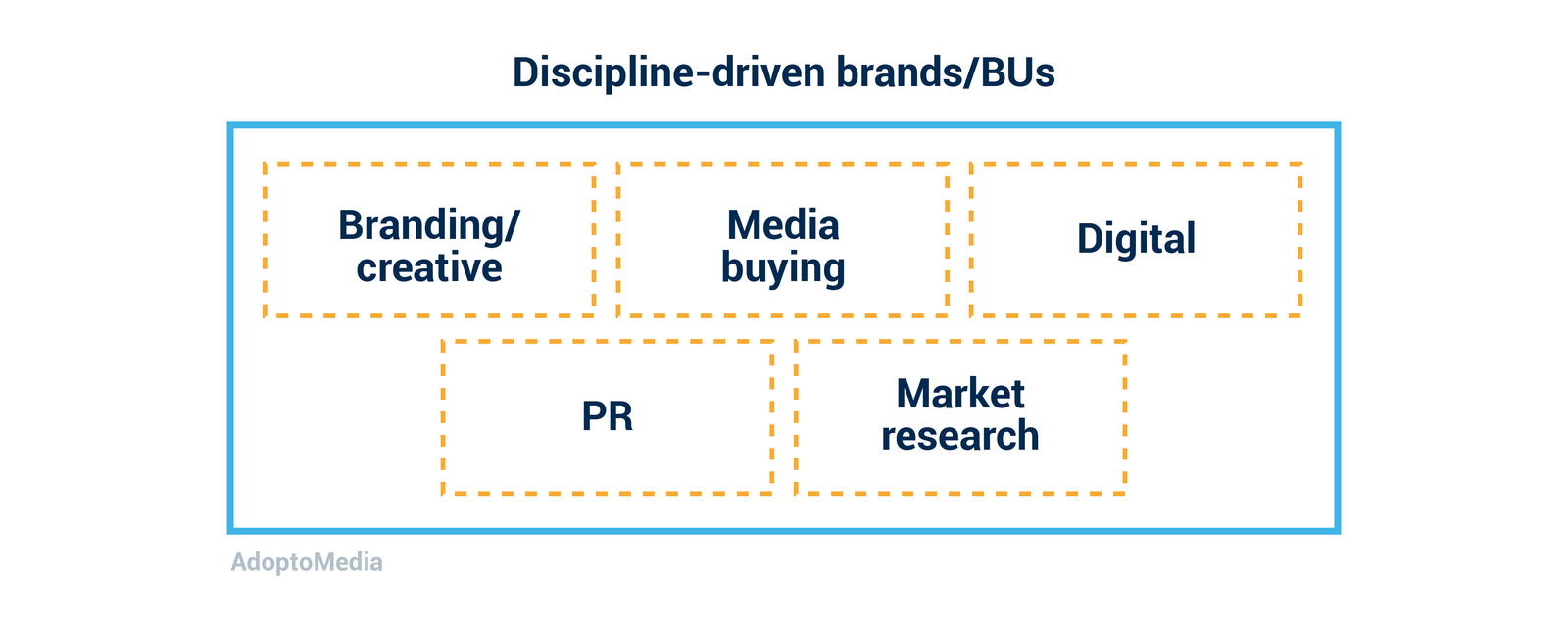
3. Interdisciplinary model
This model represents an extended version of the previous one, featuring further integration between disciplines. It unites branding and creative, media buying, and digital into a single business unit, as there is no marketing campaign that doesn’t include digital advertising channels. Another reason to do that is the fact that media-buying agencies have become the major profit drivers in the industry. They also started adding creatives to their offerings and are now competing with branding agencies. In turn, they expanded service range to get back their clients. As you can see, merging these two disciplines solves the competition problem. In contrast, research units should be viewd as independent, unbiased observers to earn customers trust.

4. One-brand, one-agency model
At this highest level of integration branding/creative, digital, media buying, PR, and research agencies are merged into one single entity, which might sound unnecessary but actually has significant advantages. For example it enables us to increase transparency and track the whole sales process horizontally at different levels, which is a feature clients are increasingly seeking right now. Such model also allows for having a few separate highly specialized agencies.

How to choose a suitable model?
When choosing a model, you need to take into account the holding company’s general business strategy, clients base and willingness to change. For example, if acquisitions play crucial role in company’s development, it’s recommended to implement a model with fewer business units, because in such case it will be easier to create a roadmap for integrating acquisitions into your business. If a company is planning to work in customer experience consulting, it should stick to interdisciplinary model. Next thing to remember is you need to keep pace with your clients and align with their level of integration, but don’t overdo it by getting too far ahead of them. And the last factor to consider before launching the transition process is whether your company’s executives welcome such a massive transformation to avoid aggressive changes that aren’t always the best option.
Risks or potential advantages?
Even the model with the lowest level of integration bears some risks, let alone the others, so there will be enough opponents to the idea of change. But if approached carefully and carried out strategically, it should result in new opportunities and strong points. In the table below you can see how potential opportunities can be used to the advantage of the company.
|
The problem |
Possible solution |
|
|
Loss of the brand equity |
Well known agencies will lose their name, identity and probably clients. |
Brand agencies should be taken through transition gradually and carefully with emphasis on the idea that “the whole is greater than the sum of the parts”. |
|
Loss of creative talent |
Creatives may quit if they feel that their unique agency has turned into a “faceless” corporation. |
Respect each team you bring into a single structure. Provide creative and career opportunities. And appoint young employees to be in charge. |
|
Slowing down |
Separate agencies may oppose the transition if they have to wait for a “corporate decision” for every move. |
Firstly, introduce any change to one agency in a test mode and then spread it to other units. Also with fewer business units you will make decisions and launch new ideas faster. |
|
Conflict of interests |
With an integrated structure, large marketing agencies won’t be able to work with competing clients through separate agencies anymore. |
This challenge should be least of your and your clients’ concerns. For example, PwC has been successfully using confidentiality terms and information barriers between teams working for competing clients. |
|
Сompetition between agencies |
The long-standing competition between agencies can’t suddenly just disappear. |
Integrated work should be encouraged and rewarded. Profit & Loss reports should also be gradually taken to a business unit level. |
Integration Roadmap
The most important thing is to carry out the process gradually and plan everything in great detail. In general three phases can be singled out.
1: Integrate flexible back-office functions, like finance; IT; and procurement.
2: Then address non-transactional, expertise-based back- and middle-office activities, such as privacy, talent and data management.
3: Finally integrate separate brands into business units.
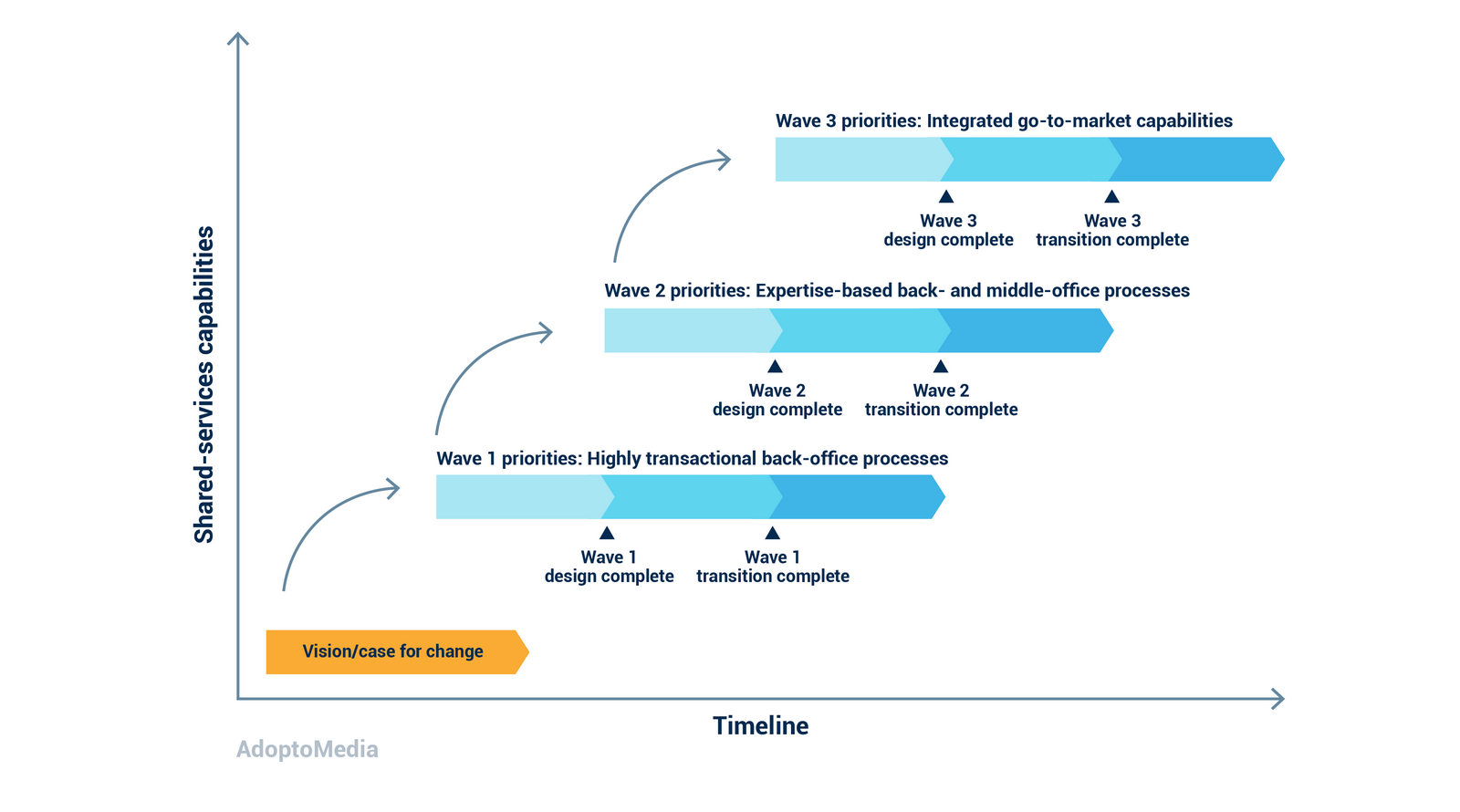
The transition will be challenging and painful, but it will be worth it, because despite the risks it will create new opportunities, simplify processes, reduce costs and increase income.
AdoptoMedia offers a solution for automating marketing operations that is a perfect fit if you want to build and manage such integrated agencies. Our platform simplifies media plan creation and approval; it automatically generates reports and dynamic dashboards with the ingestion of new data, and everybody in the system has different access level to information. We can help you to achieve best-in-class marketing transparency and accountability and start digital transformation of your business. With us it’s easy to manage all marketing operations from planning to procurement and invoicing. We have already helped our clients to optimize their media budgets and increase ROMI by 10-30%.
